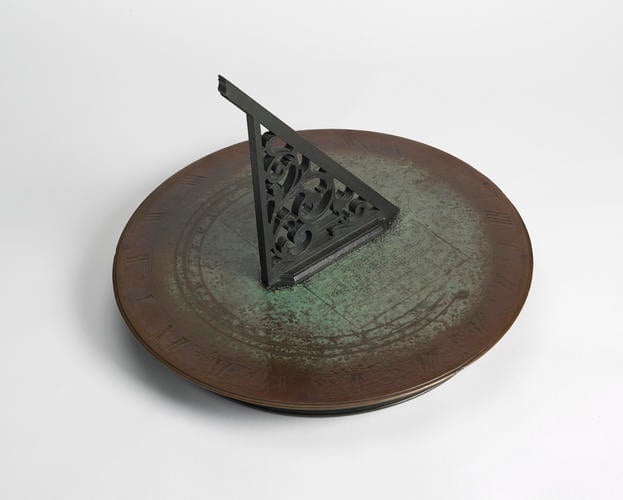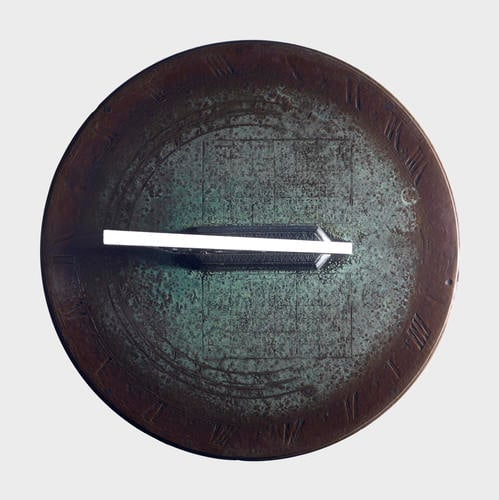-
1 of 253523 objects
Sundial c. 1699
Copper alloy | 41.0 x 52.2 cm (whole object) | RCIN 11959

Thomas Tompion (1639-1713)
Sundial c. 1699

Thomas Tompion (1639-1713)
Sundial c. 1699


-
A circular coppered metal sundial signed by famed London clockmaker Thomas Tompion (bap. 1639, d. 1713). The central metal pointer (gnomon) is ornamented with the scrolling cypher of the works patron, King William III. The dial is marked with the hours in Roman numerals around the circumference. Also in the centre of the dial is a crowned cypher, an illegible engraved inscription and a calendar to determine the date.
This sundial is one of a pair commissioned from Tompion for the Privy Garden in Hampton Court. They were most likely installed at the end of the seventeenth century as the king's new apartments and gardens were being completed. The king first stayed in his rooms for a night in October, and it is likely that the garden statuary for his Privy Garden just outside was installed in November 1699, when a customer of Tompion's was trying to see the clockmaker about a watch, but crossly noted, 'Mr. Tompion...being gon to Hampton Court it was not possible'.
William III also commissioned several clocks from Tompion, both for his own use and as diplomatic gifts. Sundials would have been required to regulate these clocks, but it is not possible to confirm if any of the king's longcases directly related to the purchase of the two dials. The second Tompion dial of the pair (RCIN 95190) is much less ornate but also features verses and tables for correcting the time and working out the date. Their presence as a time regulator brought both indoor and outdoor life together, as well as art and science, and demonstrated a patron's intellectual interest in astronomy and horology.
Text adapted from Painting Paradise: The Art of the Garden, London, 2015.Provenance
One of a pair made for William III when Hampton Court was extended in the late 17th century. This dial was relocated to Kew Gardens by William IV in 1832, and returned to Hampton Court Palace, and reunited with its partner dial, in the late twentieth century.
-
Creator(s)
(nationality)Acquirer(s)
-
Medium and techniques
Copper alloy
Measurements
41.0 x 52.2 cm (whole object)